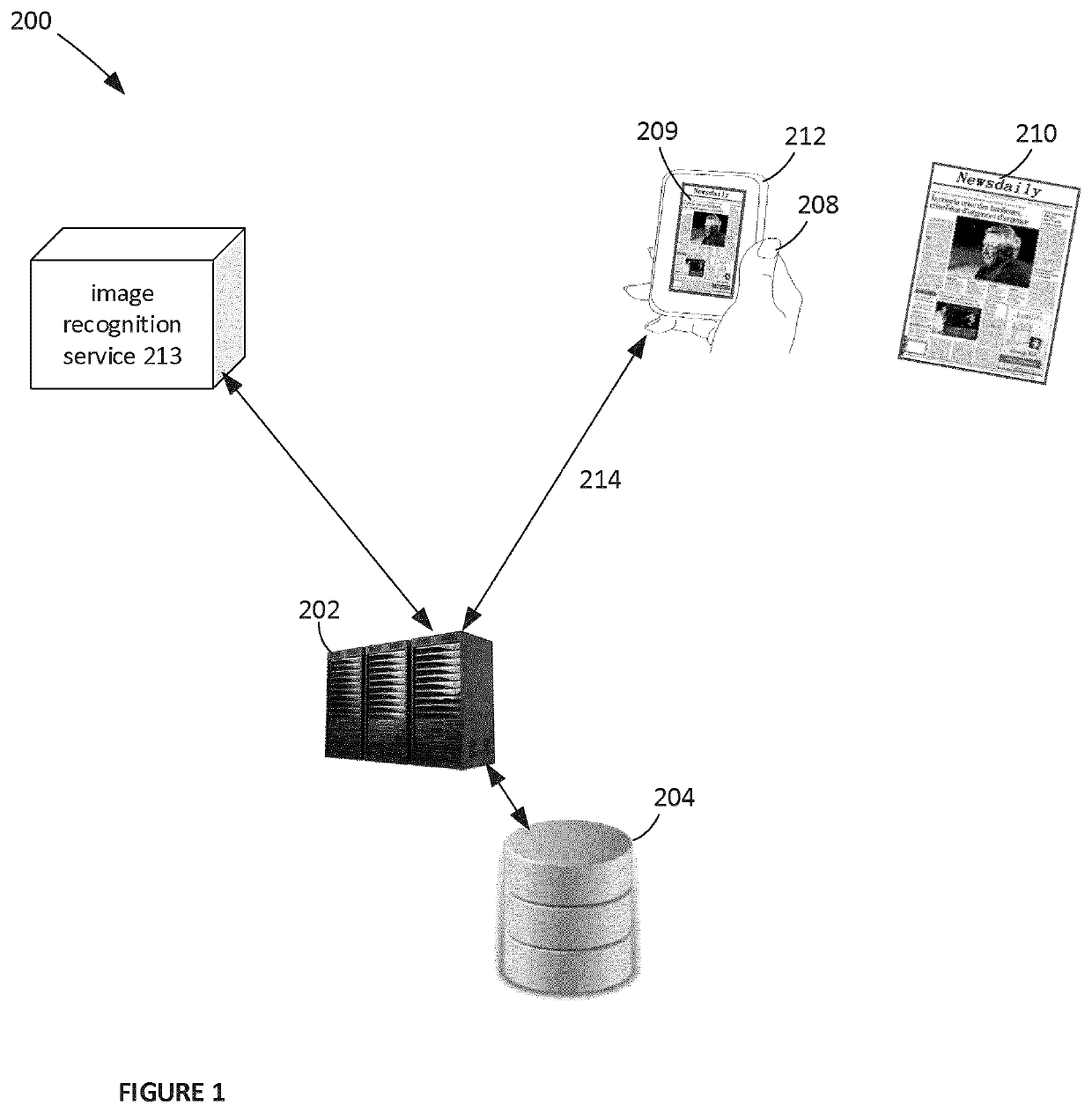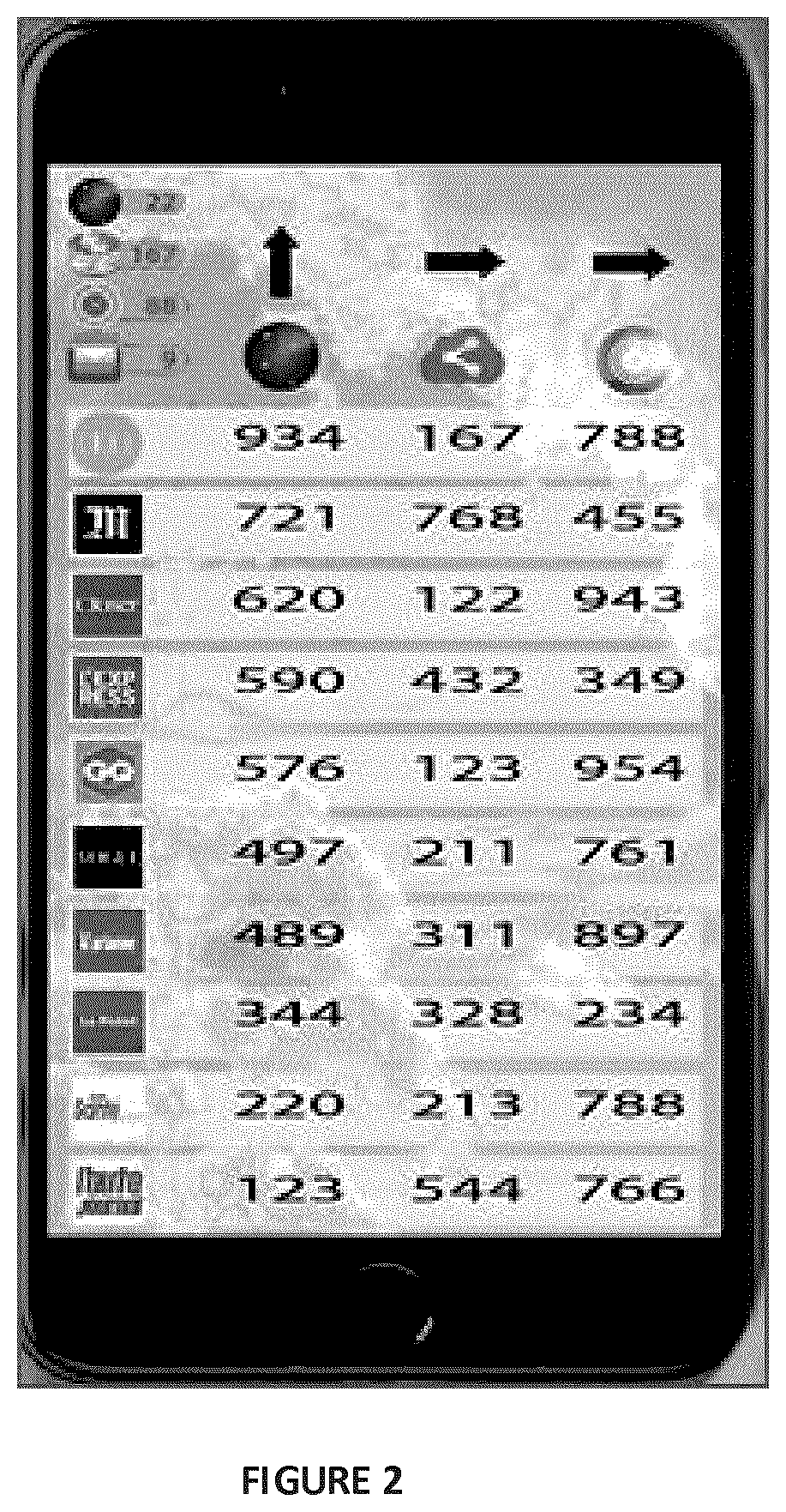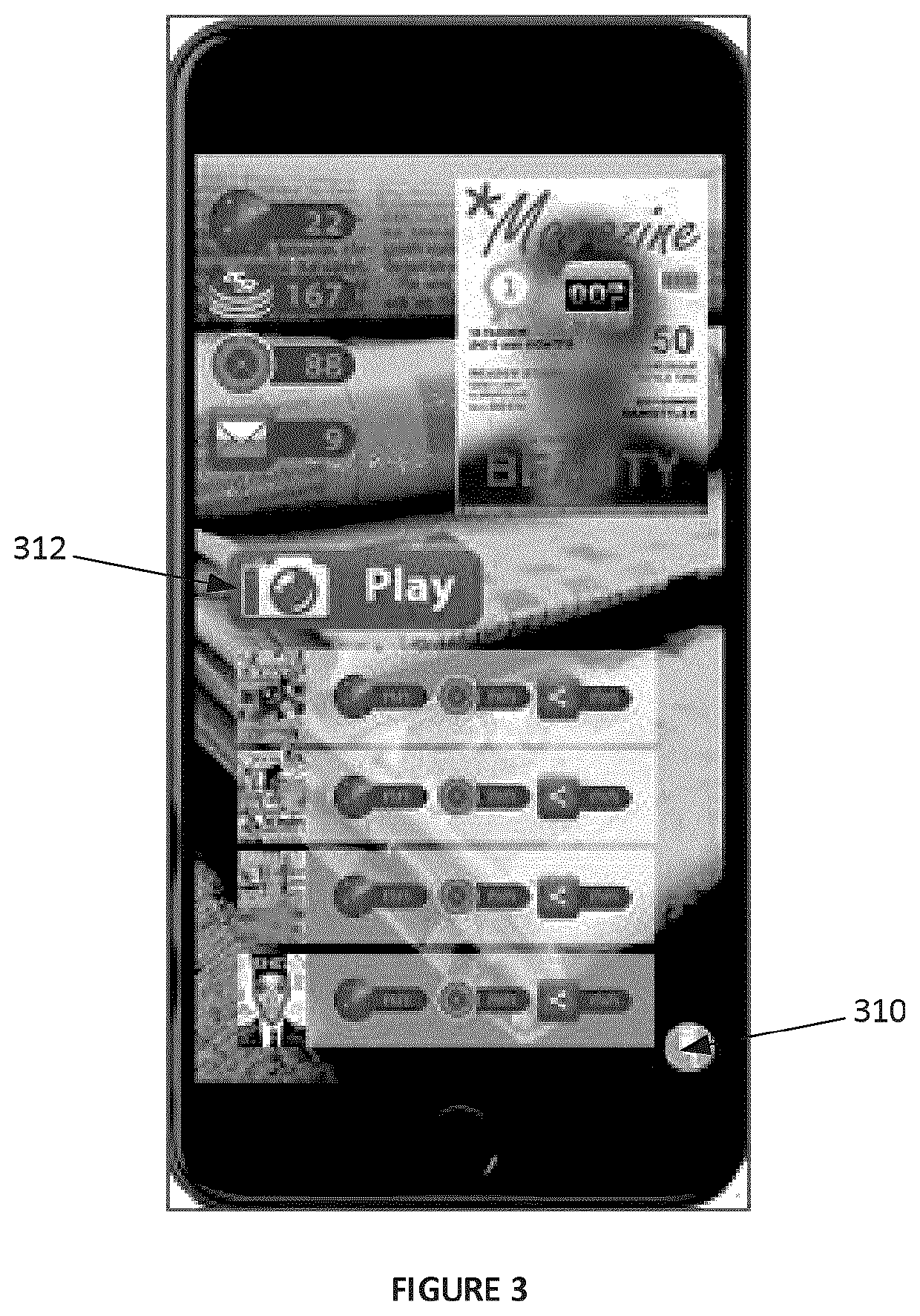System and method for providing augmented reality interactions over printed media
a technology of augmented reality and printed media, applied in the field of systems and methods for providing augmented reality interactions over printed media, can solve the problems of static content, lack of web-based capabilities of books and magazines, and numerous challenges, and achieve the effects of reducing or even replacing the need for a web-based version, increasing the quality of reading experience, and increasing budg
- Summary
- Abstract
- Description
- Claims
- Application Information
AI Technical Summary
Benefits of technology
Problems solved by technology
Method used
Image
Examples
first embodiment
[0091]The following paragraphs explain the first embodiment which deals with the most difficult step being the image identification of the printed media received from the user's device with available printed media for which augmented reality data exists on the server. The additional steps apply to both embodiments.
[0092]FIG. 1 illustrates an exemplary system for providing augmented reality interactions over printed media, in accordance with an embodiment. As shown in FIG. 1 the overall system 200 comprises a central server comprising or having access (direct access or via a network) to a database 204 (or a plurality thereof). The server 202 / database 204 comprise identification information associated with printed publications for which augmented reality interactions have been pre-stored.
[0093]In the present context and depending on the copyright country / countries in which the server is located, the identification information may include still images of the printed publications or a d...
second embodiment
[0139]In the first mode, an image tracking mechanism is activated on the device 212 so that the assets 314 can move while the device 212 moves on the video sub-window (called ARView mode). In the second embodiment, the assets are displayed over a fixed view of the images (WebView mode). This fixed view may either come from the server when the server has a thumbnail version of the page of the publication, or may be taken from a freeze of the video picture with the help of a processing module adapted for sorting the best focus, best orientation, best contrast within the set of frames continuously captured within the time necessary for the server to answer even if a first frame had been processed and sent.
[0140]By contrast, when the app is called as a reader of a PDL like a PDF; then action on the play button 312 will cause the following: Extract Type glyph, characters and associated position; Send it to server (202); Call a service on the server (202) to find if any PDL document exist...
PUM
 Login to View More
Login to View More Abstract
Description
Claims
Application Information
 Login to View More
Login to View More - R&D
- Intellectual Property
- Life Sciences
- Materials
- Tech Scout
- Unparalleled Data Quality
- Higher Quality Content
- 60% Fewer Hallucinations
Browse by: Latest US Patents, China's latest patents, Technical Efficacy Thesaurus, Application Domain, Technology Topic, Popular Technical Reports.
© 2025 PatSnap. All rights reserved.Legal|Privacy policy|Modern Slavery Act Transparency Statement|Sitemap|About US| Contact US: help@patsnap.com



